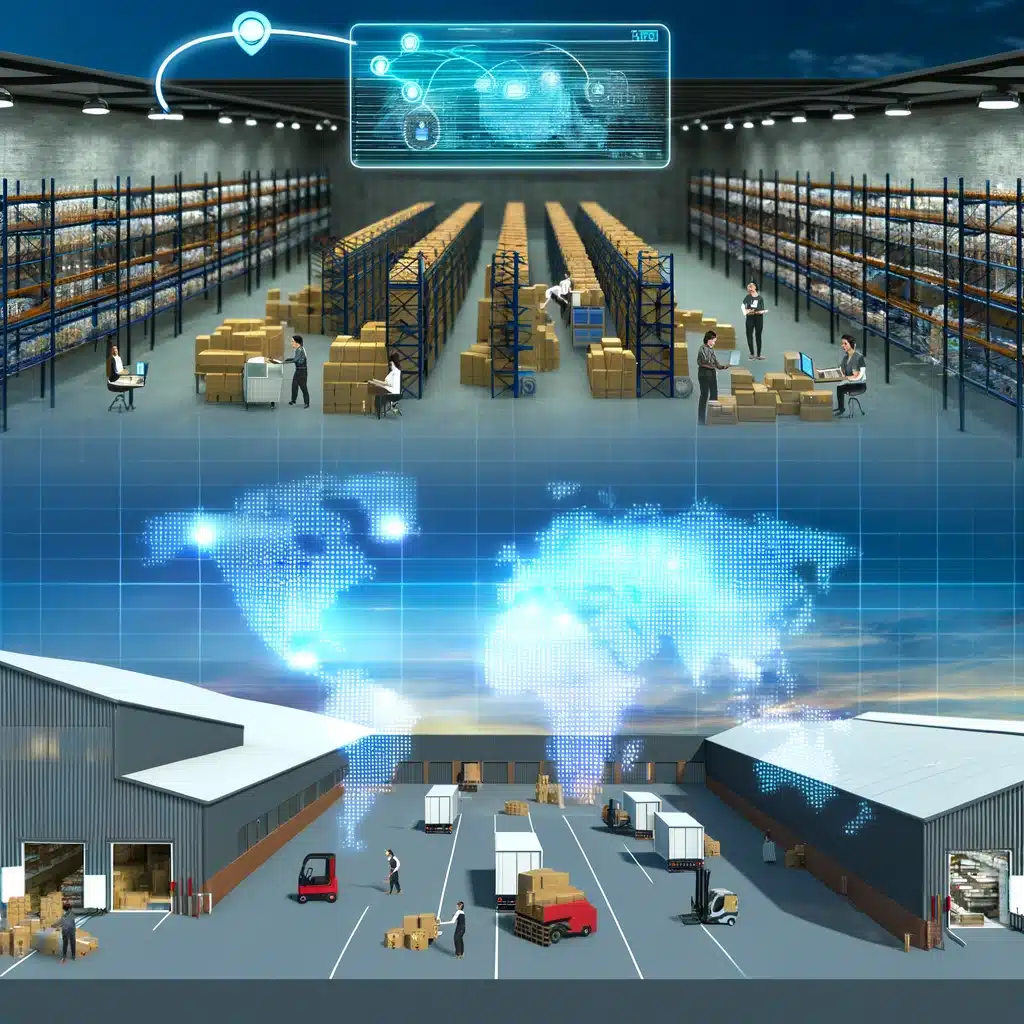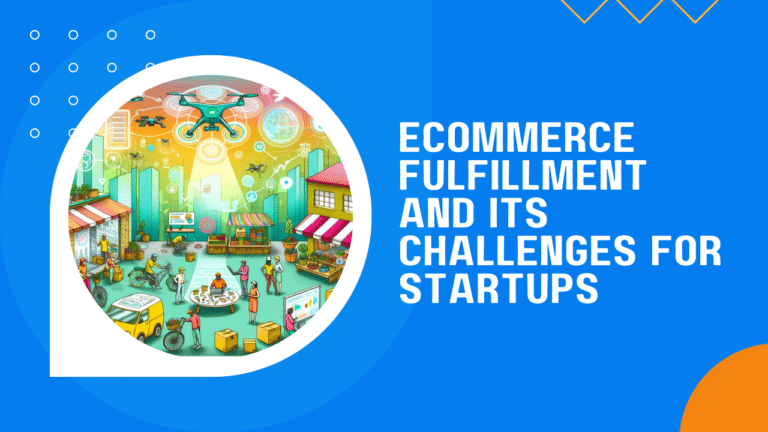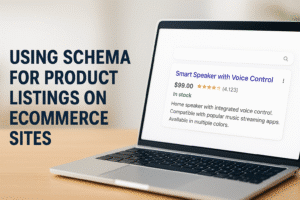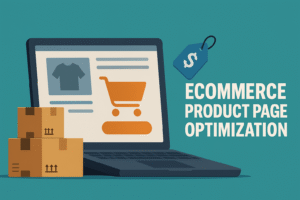Navigating the ecommerce landscape, where customer satisfaction and operational efficiency decide the fate of startups, mastering the art of fulfillment is more than a necessity—it’s a strategic advantage.
As you begin building and scaling your ecommerce venture, understanding and implementing effective fulfillment strategies becomes a priority. These processes, often complex and multi-faceted, are the backbone of ecommerce success, influencing everything from customer loyalty to your bottom line.
For many startup founders and small ecommerce business owners, order fulfillment presents a daunting challenge. With options ranging from self-fulfillment to partnering with third-party logistics providers or adopting dropshipping models, the path to choosing the right strategy can seem like a maze.
However, the secret to navigating this complexity lies in demystifying the components of ecommerce fulfillment and tailoring them to your business’s unique needs and goals.
This article is designed to guide you through the initial steps of setting up and optimizing your ecommerce fulfillment process.
By offering a deep dive into the various fulfillment options available, assessing their pros and cons, and providing actionable insights on planning for scalability and integrating technology, we aim to arm you with the knowledge to make informed decisions.
Whether you’re grappling with budget constraints, evaluating your resource availability, or simply seeking best practices for lean inventory management, this detailed exploration of your options will help ensure you are making the most informed decision for your business.
Understanding Your Fulfillment Options
As you navigate the early stages of your ecommerce venture, choosing the right fulfillment strategy is crucial to your success. Fulfillment—the process of storing, packing, and shipping orders—is integral to customer satisfaction and overall business efficiency.
Let’s explore the three main fulfillment options: self-fulfillment, third-party logistics (3PL), and dropshipping, to understand which might suit your startup best.
Self-Fulfillment: Hands-On Control
Self-fulfillment, or in-house fulfillment, means you manage every aspect of the fulfillment process, from storing inventory to shipping orders to customers.
This option offers maximum control over inventory, packaging, and shipping, allowing for a personalized touch to the customer experience.
Pros:
- Complete Control: You have full oversight of inventory management, packaging, and shipping, allowing for personalized customer experiences.
- Cost-Effective for Small Volumes: Ideal for startups with lower order volumes, as it can be more cost-effective than outsourcing.
- Flexibility: Easier to make quick changes to orders, packaging, or shipping options.
Cons:
- Time and Resource Intensive: Requires significant time and resources for storage, order processing, and shipping logistics.
- Scalability Issues: As order volumes increase, the time and effort required can quickly become overwhelming.
Third-Party Logistics (3PL): Expertise and Efficiency
Third-party logistics providers are companies that specialize in handling your fulfillment operations. By outsourcing to a 3PL, you leverage their expertise, technology, and infrastructure to streamline your fulfillment process.

Pros:
- Scalability: 3PLs can easily handle increases in order volume, making them ideal for growing startups.
- Expertise and Resources: Benefit from the 3PL’s expertise in logistics and access to state-of-the-art fulfillment technology and infrastructure.
- Cost Savings in the Long Run: Although initially more expensive, 3PLs can offer cost savings through their efficiency and scale.
Cons:
- Less Control: Outsourcing means giving up some control over the fulfillment process, which might not suit businesses with highly specialized needs.
- Cost Prohibitive for Very Small Operations: Startups with minimal order volumes might find 3PL services costly.
Dropshipping: A Lean Inventory Model
Dropshipping is a fulfillment model where you sell products that are shipped directly from the supplier to the customer.
This method eliminates the need for you to handle products directly, offering a hands-off approach to product fulfillment.
Pros:
- Minimal Investment: No need to purchase or store inventory, significantly reducing upfront costs.
- Low Risk: With no inventory to manage, there’s minimal financial risk involved in testing new products or markets.
- Easy to Start: Dropshipping can be set up quickly, making it an attractive option for new ecommerce businesses.
Cons:
- Lower Profit Margins: The ease of entry comes with lower margins, as suppliers often charge more to fulfill orders on your behalf.
- Limited Control: Little control over shipping times, packaging, and product quality, which can impact customer satisfaction.
- Dependence on Suppliers: Your reputation can be affected by your suppliers’ reliability and product quality.
Understanding your fulfillment options is the first step towards building an efficient, scalable ecommerce business.
By considering the pros and cons of each model, you can choose a strategy that aligns with your business needs, budget constraints, and long-term goals.
In the following sections, we’ll dive deeper into criteria for selecting the right fulfillment strategy, essential technologies to streamline your process, and best practices for ensuring customer satisfaction and operational excellence.
Criteria for Choosing the Right Fulfillment Strategy
Selecting the most suitable fulfillment strategy for your startup is a critical decision that can significantly impact your business’s scalability, customer satisfaction, and overall success. Here are key criteria to consider when making this vital choice:
Assessing Business Needs and Volume
Understanding your business’s current needs and projecting future growth is crucial in choosing a fulfillment strategy that can adapt and scale with you.
- Order Volume: Evaluate your current and expected order volume. A self-fulfillment strategy may work well for low volumes but consider third-party logistics (3PL) as your business grows.
- Product Type: The nature of your products—size, shelf-life, special handling requirements—can influence your fulfillment choice.
- Customer Expectations: Consider how your fulfillment strategy affects delivery times, shipping costs, and overall customer satisfaction.
Budget Constraints and Resource Availability
Financial resources and existing assets play a significant role in selecting a fulfillment method.
- Initial Investment: Analyze your budget for upfront costs. Self-fulfillment and dropshipping typically require less initial investment compared to setting up with a 3PL provider.
- Ongoing Costs: Consider the long-term costs of each option, including storage, shipping, and labor for self-fulfillment versus the fees charged by 3PL services.
- Resource Allocation: Determine how much of your internal resources—time, labor, expertise—can be dedicated to fulfillment processes.
Geographic Location and Market Reach
Your startup’s location and target market geography are significant factors in choosing a fulfillment strategy.
- Proximity to Customers: A fulfillment strategy that positions your inventory closer to your customer base can reduce shipping times and costs.
- International Shipping: If you plan to serve international markets, consider the complexities of customs, duties, and shipping logistics. A 3PL with international capabilities might be a better option.
- Local Resources: Assess the availability and reliability of local fulfillment resources, including shipping carriers and warehousing options.
Flexibility and Scalability
A fulfillment strategy should not only meet your current needs but also have the flexibility to grow with your business.
- Adaptability: Can the fulfillment option easily adapt to changes in order volume, product offerings, or market expansion?
- Scalability: Ensure the strategy can scale up efficiently without significant disruptions to your operations or customer experience.
Choosing the right fulfillment strategy involves a careful analysis of your business’s unique needs, resources, and goals. By considering these criteria, you can make an informed decision that supports your startup’s growth, ensures customer satisfaction, and optimizes your operational efficiency.
In the next sections, we’ll explore the technologies and tools that can streamline your fulfillment process, and share best practices for setting up a system that’s not just functional but also scalable and responsive to the evolving ecommerce landscape.
Technology and Tools to Streamline Fulfillment
In today’s ecommerce environment, much like the rest of the world, leveraging technology is not optional; it’s essential. From managing inventory to ensuring timely deliveries, the right set of tools can significantly enhance your fulfillment strategy’s effectiveness.
Here’s a look at basic technologies that every ecommerce startup should consider integrating into their fulfillment processes.
Inventory Management Systems
An efficient inventory management system (IMS) serves as the backbone of your fulfillment process, enabling you to track stock levels, manage reordering, and prevent overstocking or stockouts.

- Features to Look For: Real-time tracking, automated reordering, and integration capabilities with sales channels and fulfillment partners.
- Benefits: Improves order accuracy, reduces holding costs, and enhances the ability to meet customer demand without delay.
Order Management Systems
Order management systems (OMS) streamline the process from when a customer places an order to the final delivery, ensuring a smooth operation across multiple sales channels.
- Features to Look For: Multichannel integration, automated order routing, and centralized order tracking.
- Benefits: Simplifies order processing, reduces manual errors, and provides a clear view of order status for both the business and its customers.
Shipping and Logistics Software
Shipping and logistics software helps ecommerce businesses optimize their shipping processes, from carrier selection to label printing and tracking shipments.
- Features to Look For: Carrier integration, shipping rate comparison, and batch label printing.
- Benefits: Reduces shipping costs, accelerates order fulfillment, and enhances customer satisfaction with timely deliveries and updates.
Ecommerce Platform Integration
Integrating your fulfillment tools with your ecommerce platform ensures that sales, inventory, and customer information flow seamlessly between systems.
- Features to Look For: Easy integration with major ecommerce platforms, data synchronization, and automated data transfer.
- Benefits: Streamlines operations, reduces the risk of data discrepancies, and provides a unified view of business performance.
Customer Service and Returns Management Tools
Efficient tools for managing customer inquiries and returns can significantly enhance the post-purchase experience and customer satisfaction.
- Features to Look For: Automated return processing, customer communication channels, and analytics on return reasons.
- Benefits: Improves customer loyalty, streamlines returns and exchanges, and offers insights into potential product or service improvements.
Incorporating these technologies into your fulfillment strategy not only streamlines your operations but also positions your startup for scalability and success in the competitive ecommerce landscape.
As you plan for growth, continually assess and adapt your tech stack to meet evolving business needs and customer expectations.
Planning for Scalability
As your ecommerce startup matures, your fulfillment strategy must evolve to keep pace with increasing order volumes, expanding product lines, and entering new markets. Planning for scalability from the outset ensures that your fulfillment operations can support growth without sacrificing efficiency or customer satisfaction.
Anticipate Growth and Set Scalable Foundations
Strategic Forecasting: Use sales data and market trends to forecast growth and plan for peak periods. This proactive approach helps in anticipating the need for additional resources, such as storage space, inventory, and staffing.
Flexible Infrastructure: Opt for fulfillment solutions that offer flexibility to scale up or down as required. This includes selecting software with scalability in mind and considering fulfillment partners who can support your growth.
Transitioning to More Complex Fulfillment Solutions
Timing the Transition: Knowing when to shift from self-fulfillment to a third-party logistics provider (3PL) or from one fulfillment model to another is key. Signs you’re ready for a transition include consistently increasing order volumes, expansion into new markets, or the need for specialized logistics services.
Evaluating Partners: Choose fulfillment partners with a proven track record of supporting scalable growth. Look for partners that offer a range of services, from warehousing and shipping to returns management, and can integrate seamlessly with your existing technology stack.
Leveraging Technology for Growth
Invest in Scalable Tech: Ensure your technology stack, including inventory and order management systems, is built to grow with you. Cloud-based solutions offer scalability and flexibility, enabling you to add features or increase capacity as your business expands.
Automation: Automate routine tasks such as order processing, inventory updates, and customer notifications. Automation not only improves efficiency but also reduces the likelihood of errors as order volumes grow.
Building a Scalable Team and Processes
Staffing for Growth: Develop a plan for scaling your team, including identifying key roles that will need to be filled as your business grows. Consider outsourcing certain functions to specialists, particularly in areas like logistics and customer service.
Continuous Improvement: Embrace a culture of continuous improvement, regularly reviewing and optimizing your fulfillment processes. This includes soliciting feedback from customers and team members, and staying informed about new technologies and practices in fulfillment.
Planning for scalability is an ongoing process that requires attention to detail, strategic foresight, and a willingness to adapt to changing circumstances.
By laying a solid foundation and remaining agile, your ecommerce startup can grow smoothly, ensuring that your fulfillment operations remain a driver of customer satisfaction and operational excellence.
Best Practices and Tips for Startup Fulfillment
Effective fulfillment processes are crucial for ecommerce startups aiming to build a loyal customer base and scale their operations. Here are key best practices and tips to ensure your fulfillment strategy contributes positively to your business’s success.
Lean Inventory Management
Adopt a Just-in-Time Approach: Minimize holding costs and reduce the risk of overstocking by aligning your inventory levels closely with demand. Utilize sales forecasts and historical data to make informed decisions about stock levels.
Regular Inventory Audits: Conduct regular audits to ensure inventory accuracy. Discrepancies between physical stock and inventory records can lead to order fulfillment errors and customer dissatisfaction.
Prioritize Quality Customer Service
Transparent Communication: Keep your customers informed throughout the fulfillment process. Provide tracking information and proactive updates on any delays or issues.
Efficient Returns Process: Make your returns process as simple and hassle-free as possible. A clear and easy-to-follow returns policy can enhance customer trust and loyalty.
Use of Technology for Competitive Advantage
Invest in the Right Tools: Leverage technology to streamline every aspect of your fulfillment process. From inventory management to shipping and tracking, the right tools can significantly increase efficiency and accuracy.
Integrate Systems: Ensure your ecommerce platform, inventory management, and shipping tools are fully integrated. Seamless integration reduces manual work, minimizes errors, and provides a better overview of your operations.
Foster Strong Relationships with Suppliers and Partners
Collaborate for Success: Build strong relationships with your suppliers and fulfillment partners. Effective communication and collaboration can lead to better terms, improved reliability, and access to additional services as your business grows.
Negotiate Shipping Rates: Regularly review and negotiate your shipping contracts. Volume increases and strategic negotiations can result in more favorable rates and terms.
Stay Informed and Adapt
Keep Abreast of Industry Trends: The ecommerce and logistics sectors are rapidly evolving. Stay informed about the latest trends, technologies, and best practices to continually refine your fulfillment strategy.
Be Prepared to Pivot: The ability to adapt your fulfillment strategy in response to growth, changes in the market, or customer feedback is crucial. Remain open to exploring new methods, technologies, and partnerships that can improve your fulfillment operations.
Implementing these best practices and tips can position your ecommerce startup for successful fulfillment operations that support growth, enhance customer satisfaction, and improve operational efficiency.
As you move forward, remember that fulfillment is a dynamic aspect of your business, requiring ongoing attention and adaptation to meet the evolving needs of your customers and the marketplace.









